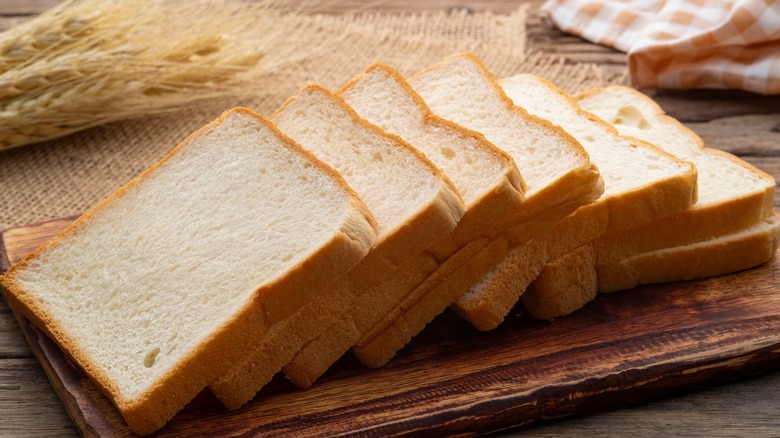The Reason Bread Should Never Be Stored On Top Of The Fridge
Where do you keep your bread in the kitchen? Maybe it's in its own drawer out of the way. Maybe you have it on top of the fridge, so you can have easy access to it when you're making a sandwich out of cold cuts or lunch meat. If you have your bread on top of your fridge, you may want to avoid that habit as much as possible or else you'll find yourself throwing out bread more often than not.
But why should you avoid doing this? After all, the fridge is high up enough that any pests can't get to it, it's in a very visible place, and you're always within easy reach of it. While that may be true, the top of your fridge is actually a prime place for your bread to dry out and mold. If you put a loaf of bread that's wrapped in plastic on top of the fridge, you'll start to notice that it's starting to mold at a faster rate than that of bread stored in a drawer.
Bread that's in a paper bag or sleeve wouldn't last long either, as you may find it to have suddenly dried out and become rough and stale. Your bread may be safe from any pests, but it's not safe from natural expiration. How exactly can a fridge dry out and mold your bread so quickly? Isn't the whole point of a refrigerator supposed to keep things cool and fresh for as long as possible?
Your fridge can give off excess heat and moisture
Open up your refrigerator and stick your hand inside of it. Feels pretty cold in there, right? Now, if possible, reach your hand around the back of the fridge or put your food right under the door where the vent is. You'll be surprised how much heat is coming out of something so cold.
Much like any appliance, a refrigerator needs electrical power to work. A refrigerator obviously can't just make cold air out of nothing — it needs to generate that cold air with a refrigeration unit. As this unit runs, producing enormous amounts of cold air for both the fridge and freezer, the unit naturally begins to produce heat of its own the more it runs. This heat circulates around the sides, top, and bottom of the refrigerator, collecting away from the cold interior by use of vents. It's this damp, moist heat which collects around the top of your fridge that makes it so hazardous for your loaf of bread, as the heat can not only dry it out but help encourage the production of mold.
This is also why you may notice that your bread seems to spoil faster when left by other heavy appliances, such as dishwashers for example. Any sort of heavy appliance can give off large amounts of heat and moisture, so it's always best to keep your bread or other perishables a good distance away from them to prevent them from becoming spoiled too quickly.
You can actually keep bread in your freezer
Now, if there's no other room in the kitchen for you to store your bread, you may argue that the top of the fridge is the only place to do it. But, having read that the heat produced by the fridge can cause the bread to dry out and mold, you have to wonder if there's anywhere else you could put your bread. Surprisingly enough, you can still use your fridge to store bread — just not on top of it.
If there's space in your freezer, you may find it better to store your loaf of bread in there. Although freezing your bread is admittedly an odd suggestion when we first mention it, there's actually one main benefit of this method. The cold dry air helps to ensure that your bread remains fresh, instead of exposing the bread to heat, air, and moisture. Much like freezing fruits or vegetables, the bread will avoid any moisture or heat that could dry it out or encourage the growth of mold-forming bacteria. In fact, you may even find that, once thawed, the bread may have a fresher taste to it.
If you don't like the idea of freezing bread, you're welcome to buy a breadbox, which will also help keep the bread from being exposed to moist air. So long as it's not on top of your fridge, you're free to put your bread anywhere you like.


